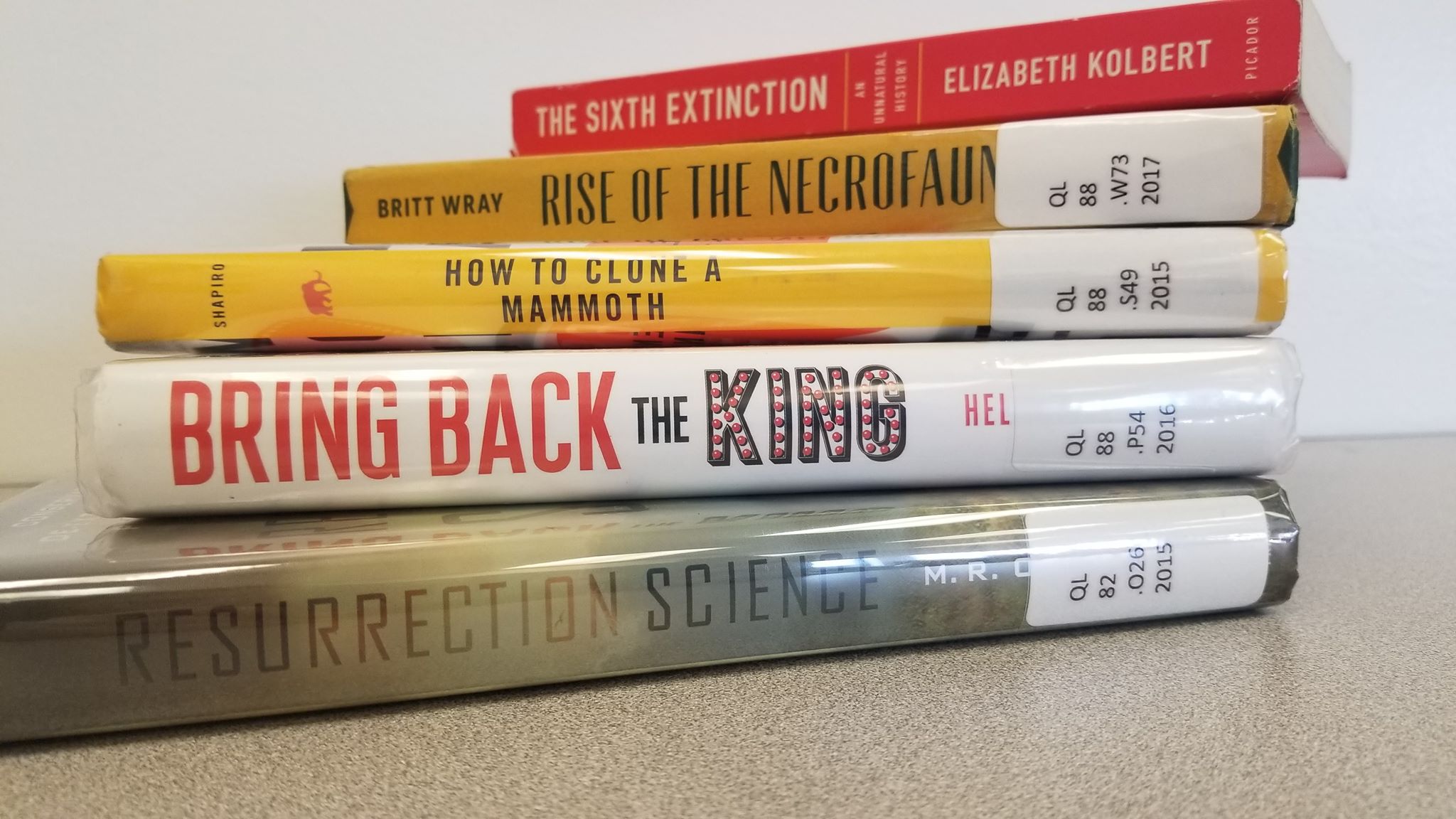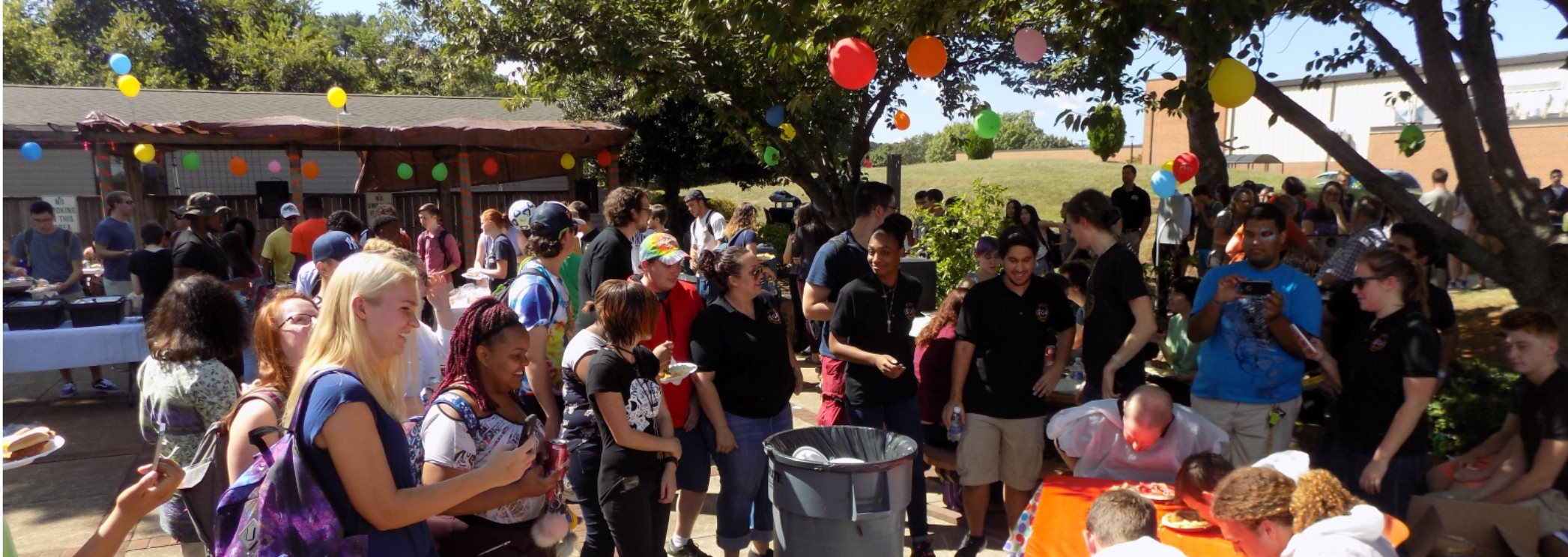
More than One Book: Discovering De-extinction
Kaytlynne Gentry, staff writer
The latest PVCC One Book, The Sixth Extinction: An Unnatural History, by Elizabeth Kolbert, a journalist and environmentalist, starts out focusing on amphibians and their introduction to a bacteria called Batrachochytrium dendrobatidisthe (BD) and how it was introduced/spread by humans. In chapter two, the key theme is that earlier scientists did not accept the idea of extinction until the discovery of the mastodon’s molars. Throughout the book, each chapter has a different theme centered with the main idea, humans and a few natural causes are creating the sixth extinction. Chapter 13 covers the understanding of futurology, preserving animal DNA and piqued my curiosity of the efforts scientists are making to possibly bring back extinct animals. In one word De-extinction. Across the campus professors are working The Sixth Extinction into the course assignments, which led me to explore what books PVCC’s library had about the topic of chapter 13.
The PVCC library offers a variety of similar books such as How to Clone a Mammoth: The Science of De-extinction, by Beth Shapiro, an American molecular biologist. How to Clone a Mammoth is not a how-to guide, but a review of all the processes necessary for de-extinction. Shapiro explains the process of de-extinction and how the cloned animals hoped to be resurrected will not be the same exact animals. Shapiro also acknowledges the fact that once an animal is extinct, it really is extinct forever. The next best thing is a man-made genetically modified version of the extinct animal.
She also brings up the issues of where the animals will be in the wild, what can happen in those ecosystems, and what type of regulation these new animals will require. And if all else fails with de-extinction, there will be research and technologies learned that will help endangered species.
Next, I found Resurrection Science: Conservation, De-extinction and the Precarious Future of Wild Things, by M. R. O’Connor. O’Connor covers the efforts taken today in animal conservation, the moral and ethical standpoints that scientists face with de-extinction. Also mentioned in The Sixth Extinction, O’Connor highlights importance of cryobanks in the efforts to resurrect endangered and extinct species. She then leaves the readers with more questions than answers.
Bring Back the King: The New Science of De-extinction, by Helen Pilcher, continues with the same concept. Pilcher jokingly suggests bringing back the king of rock and roll, Elvis Presley. But the main focus is about the ability scientists have to bring extinct animals back to life. She highlights a process of cloning by using living animals’ DNA to resurrect their ancestors by altering the DNA with lost traits. She goes on to discuss many endangered and extinct animals and their probability of survival and the likelihood of bringing them back at all.
Lastly, I read The Rise of the Necrofauna: The Science, Ethics, and Risks of De-Extinction, by Britt Wray. Wray has a B.S. in Biology and working towards a Ph.D. in Science Communication; she is currently a radio broadcaster and writer. Wray, unlike the other works mentioned, highlights the issues associated with de-extinction such as the legal, ethical, and environmental issues while also referencing the benefits that de-extinction will have on our ecosystems. She refers to other scientists and philosophers on their stands against de-extinction and to my surprise, they are against everything positive I have read so far. Resurrecting extinct animals such as the woolly mammoth and Tasmanian tiger would result in them living in captivity and used for research and our entertainment.
Wray also raises the issue of “last-chance” tourism, the game of people making a profit from critically endangered species living in captivity and also raising the “re-creation tourism” profits that comes along with de-extinction, just like the films of Jurassic Park. To take a look further and open your mind to all sides of the de-extinction, check it out. The Rise Of the Necrofauna: The Science, Ethics, and Risks of De-Extinction is by far the most engaging book I have read from the theme of our PVCC One Book, and I highly suggest reading it!
Check these books out in the zoology section at the Jessup Library. Resurrection Science QL 82. O26 2015, Bring Back the King QL 88. P54 2016, How to Clone Mammoth QL 88 .P549 2015 and The Rise of The Necrofauna QL 88 .W73 2017.







